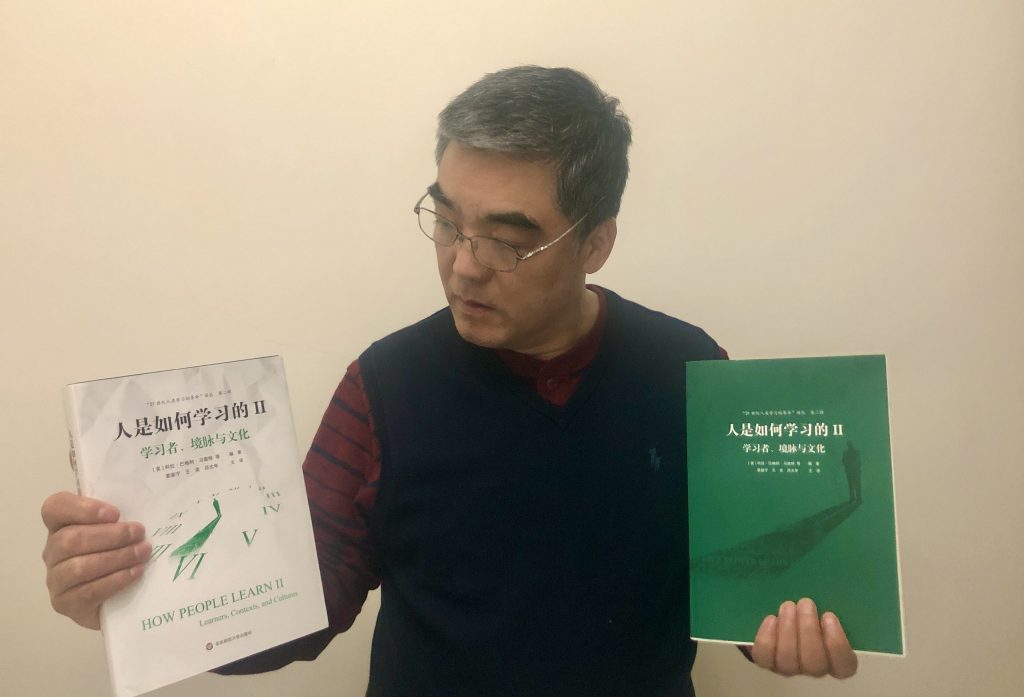书接上回,继续聊《人是如何学习的》II 的二十一条结论!
在上次的《人是如何学习的:21条主要结论1》中,我们一起学习了这二十一条主要结论中的前6条主要结论,这一篇推文继续学习接着的11条主要结论。

结论5-1
从事比较熟悉的活动时,先前知识可以减少注意力需求,并且可以促进新的学习。然而,先前知识也可能带来偏向,导致人们的注意不到新的信息并依赖现有模式来解决新问题。这些偏向只有通过有意识的努力才能被克服。
CONCLUSION 5-1: Prior knowledge can reduce the attentional demands associated with engaging in well-learned activities, and it can facilitate new learning. However, prior knowledge can also lead to bias by causing people to not attend to new information and to rely on existing schema to solve new problems. These biases can be overcome but only through conscious effort.
自留地君点评:其实这里涉及到了人的心智资源的分配问题,也就是注意力的问题。在学习和活动中,当人从事的多个活动,一个比较自动化,或者半自动化的时候,其所需要的心智资源就比较少,这样人就可以把更多的注意力投入到新的学习或活动之中。
结论5-2
学习者通常会对他们正在积累的信息生成自己的新理解,并通过在信息片段之间建立逻辑联系来有效地扩展他们的知识。这种产生新理解的能力让学习者得以使用他们的知识来概括、分类、解决问题。
CONCLUSION 5-2: Learners routinely generate their own novel understanding of the information they are accumulating and productively extend their knowledge by making logical connections between pieces of information. This capacity to generate novel understanding allows learners to use their knowledge to generalize, categorize, and solve problems.
自留地君点评:这也许就是认知心理学所说的认知结构的主动建构吧!通过这样的主动建构,人赋予了信息以意义,并将新获得的信息和知识,架构到已有的知识结构之中,用于解释和加工新的知识。
结论5-3
有证据表明,有效的学习策略包括这样一些方法:帮助学生提取信息、鼓励他们总结和理解正在学习的材料,以及对学习材料的呈现进行间隔安排和结构化。创建有组织的独特知识结构的有效策略,鼓励学习者通过精制来超越显性材料,并通过在各种境脉中调集和应用信息来丰富他们对信息的心智表征。
CONCLUSION 5-3: The learning strategies for which there is evidence of effectiveness include ways to help students retrieve information and encourage them to summarize and explain material they are learning, as well as ways to space and structure the presentation of material. Effective strategies to create organized and distinctive knowledge structures encourage learners to go beyond the explicit material by elaborating and to enrich their mental representation of information by calling up and applying it in various contexts.
自留地君点评:这个结论可以视为深度学习和有意义学习的内在机制。作为教师,我们在设计学习活动的时候,我们在进行教学设计的时候,其实应该更多的思考,如何充分地利用好这些有效的学习策略。
结论5-4
学习策略的有效性受到学习者现有技能和先前知识、学习材料的性质及学习目标等境脉性因素的影响。因此,为了有效地应用这些策略,需要仔细考虑它们的特定机制如何对特定的学习者、场境和学习目标起到有利作用。
CONCLUSION 5-4: The effectiveness of learning strategies is influenced by such contextual factors as the learner’s existing skills and prior knowledge, the nature of the material, and the goals for learning. Applying these approaches effectively therefore requires careful thought about how their specific mechanisms could be beneficial for particular learners, settings, and learning objectives.
自留地君点评:这个结论告诉我们的是,学习策略的有效性受诸多因素的影响,包括学习者现有技能、先前知识、学习材料的性质、学习目标等等。为了有效地运用这些策略,学习者,尤其是教育工作者需要在教学设计的时候,需要中分考虑这些因素。

《人是如何学习的:学习者、境脉与文化》
结论6-1
学习动机受个体为自己构建的多重目标的影响,这些目标源自于个体的生活于学校经历及学习发生的社会文化境脉。如果学校或学习环境能让学习者感受到“归属感”,并且当环境可以提升学习者的能动性和目标感时,各个年龄段的学习者的学习动机都能得到促进。
CONCLUSION 6-1: Motivation to learn is influenced by the multiple goals that individuals construct for themselves as a result of their life and school experiences and the sociocultural context in which learning takes place. Motivation to learn is fostered for learners of all ages when they perceive the school or learning environment is a place where they “belong” and when the environment promotes their sense of agency and purpose.
自留地君点评:动机是人的积极性的根本动力。激发学习者的学习积极性和主动性可以说是任何学段和任何类别的教学的根本所在。在技术无处不在的大背景下,教师的不可替代性之一,就体现在情感交流和激励、激发学习者的学习动机。
结论6-2
教育工作者可以通过以下方式关注学习者的参与、坚持和表现,从而支持学习者的动机:
- 帮助他们根据表现来设定理想的学习目标和适当的挑战性目标;
- 创造他们所看重的学习经验;
- 支持他们的控制感和自主性;
- 通过帮助他们认识、监控自己的学习过程并对学习过程进行策略制定来培养他们的胜任感;
- 创建有情感支持和无威胁的学习环境,让学习者感到安全和受到重视。
CONCLUSION 6-2: Educators may support learners’ motivation by attending to their engagement, persistence, and performance by:• helping them to set desired learning goals and appropriately challenging goals for performance;• creating learning experiences that they value;• supporting their sense of control and autonomy;• developing their sense of competency by helping them to recognize, monitor, and strategize about their learning progress; and• creating an emotionally supportive and nonthreatening learning environment where learners feel safe and valued.
自留地君点评:这个结论中的五条,实属激发学习者动机的5个具有可操作性的策略,教师在设计学习活动的时候,可以直接加以应用。
结论7-1
有效教学取决于对于以下三组因素的交互作用的理解:
(1)学习者的先前知识、经验、动机、兴趣、语言、认知技能;
(2)教育者自身的经验和文化影响;
(3)学习环境的文化、社会、认知和情感特点。
Conclusion 7-1: Effective instruction depends on understanding the complex interplay among learners’ prior knowledge, experiences, motivation, interests, and language and cognitive skills; educators’ own experiences and cultural influences; and the cultural, social, cognitive, and emotional characteristics of the learning environment.
自留地君点评:这个结论中的三组因素,是有效教学的关键,也是“因材施教”和教学成效的试金石。
第一点,学习者的因素是“因材施教” 的“材”。不了解学习者,一切都是抓瞎。
第二点,教育者的因素是“因材施教”中“施教”的主体。它关乎教学成败。
第三点,学习环境,可以简单理解为“因材施教”的场域。
对于这三点以及三者之间交互作用的理解,直接决定了教学的成效。
结论7-2
多种研究都表明用以下方法让学习者指导自己学习的重要性:在发展元认知技能方面提供指向明确的反馈和支持,提供与学习者现有能力匹配良好的挑战机会,在确定和追求有意义的目标方面提供支持。
CONCLUSION 7-2: A disparate body of research points to the importance of engaging the learner in directing his own learning by, for example, providing targeted feedback and support in developing metacognitive skills, challenges that are well matched to the learner’s current capacities, and support in setting and pursuing meaningful goals.
自留地君点评:这条结论中的三个方法均经历了教育心理学研究的检验,也获得了相关研究结论的支持:元认知、最近发展区、有意义学习。
结论7-3
越来越多的研究支持采取一种教育的资产模型,在这一模型中,课程和教学技术支持所有的学习者,将他们的学术目标和他们的校外学习加以连接,这样,每一个学习者在多种场境中的的学习经验和机会都能对其自身发挥作用。
CONCLUSION 7-3: A growing body of research supports adopting an asset model of education in which curricula and instructional techniques support all learners in connecting academic learning goals to the learning they do outside of school settings and through which learning experiences and opportunities from various settings are leveraged for each learner.
自留地君点评:这种教育的资产模型(an asset model of education)重视“迁移”的价值和“联结”的意义。“迁移”是把学校所学用于解决显示问题,“联结”是把新的情景与已有经验建立联系。
结论7-4
有意识地教授某些学科(如科学、历史、数学)特定的语言和实践方法,对于帮助学生发展对这些科目的深层理解至关重要。
CONCLUSION 7-4: Purposefully teaching the language and practices specific to particular disciplines, such as science, history, and mathematics, is critical to helping students develop deep understanding in these subjects.
自留地君点评:这条结论中的某些学科的“特定语言和实践方法”,对科学,就是科学方法;对历史,就是史学方法;对数学,也就是数学方法。这些方法,比那些死的知识,更有意义,更有价值,更能帮助学习者对这些科目发展深层理解,也更有利于学习触类旁通,举一反三,融会贯通,进而创造性地解决问题。
结论7-5
评价对于促进和监控学生的学校学习而言是一个关键的工具。如果以清晰定义的学习模型为基础,评价信息可以用于确定并缩小学生在学习和表现上的当前水平和期望水平之间的差距。
CONCLUSION 7-5: Assessment is a critical tool for advancing and monitoring students’ learning in school. When grounded in well-defined models of learning, assessment information can be used to identify and subsequently narrow the gap between current and desired levels of students’ learning and performance.
自留地君点评:评价对学习和教学的意义至关重要。在西方语境中,Assessment of / for / as learning 的意义不同。Assessment of learning 是对学习进行评价,也就是评价什么?评价学习。Assessment for learning 是突出评价的目的,评价是为了学习。
Assessment as learning 是把评价作为一种学习的活动。

未完待续,敬请期待!